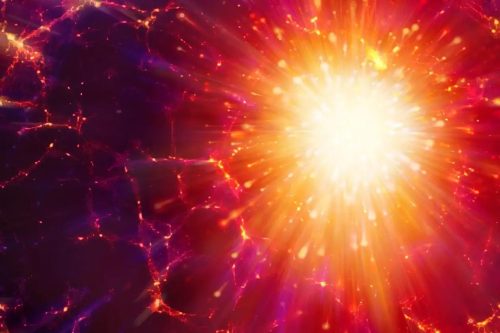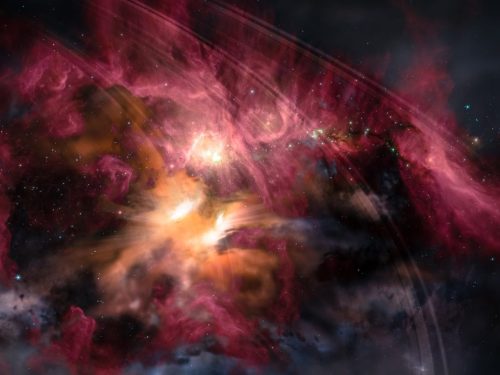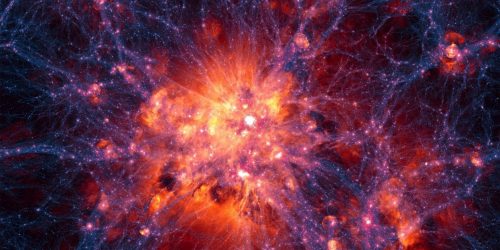
Recent advancements in space telescopes and data analysis techniques have allowed researchers to delve deeper into the mysteries of the universe. One of the most perplexing phenomena is dark energy, which constitutes a significant portion of the universe’s energy density, estimated to be around 76%. This elusive force, believed to be evenly distributed throughout space and constant over time, plays a pivotal role in the accelerated expansion of the cosmos.
Our current understanding of physics has been challenged by the presence of dark energy, and scientists are determined to unravel its enigmatic nature. A groundbreaking study utilizing the eROSITA X-ray telescope, led by I-Nong Chiou from National Cheng Kung University in Taiwan, in collaboration with astrophysicists from LMU, offers new insights into dark energy through the exploration of galaxy clusters.
Unveiling the Dark Energy Puzzle
The discovery of the universe’s expansion in the 1920s by Edwin Hubble marked a significant turning point in our understanding of the cosmos. However, it wasn’t until 1998 that scientists studying Type Ia supernovae made an astonishing revelation—the universe’s expansion was not only continuing but also accelerating. To explain this accelerated expansion, researchers postulated the existence of an unknown force, aptly named dark energy, which acts as an anti-gravitational influence, propelling cosmic expansion.

The recent study conducted using the eROSITA X-ray telescope focuses on galaxy clusters, massive cosmic structures that offer valuable insights into the nature of dark energy. By monitoring the formation of galaxy clusters over time, astronomers can gain a deeper understanding of the behavior and properties of dark energy. However, the rarity and difficulty in detecting these clusters necessitate surveys covering vast portions of the sky, using state-of-the-art telescopes like eROSITA.
eROSITA’s All-Sky Survey
Launched in 2019, the eROSITA X-ray space telescope represents a significant milestone in astrophysical research. Developed under the leadership of the Max Planck Institute for Extraterrestrial Physics, eROSITA embarked on an ambitious mission to conduct an all-sky survey, scanning the cosmos for elusive galaxy clusters. This high-sensitivity telescope has the potential to uncover a treasure trove of data crucial for comprehending dark energy.
By counting the number of galaxy clusters formed in the universe over various time periods, known as redshifts, scientists can glean insights into the nature of dark energy. Dr. Matthias Kleinp, one of the researchers involved in the study, emphasizes the significance of these observations in unraveling the mysteries surrounding dark energy.
Implications and the Path to the Future
Studying dark energy is not only a matter of scientific curiosity but also an urgent quest to complete our understanding of the fundamental workings of the universe. The enigmatic nature of dark energy has captivated the scientific community, and its exploration represents a significant challenge for researchers worldwide. The search for answers continues, as the quest to comprehend the underlying mechanisms governing the expansion of the universe remains ongoing.

The use of advanced telescopes, such as eROSITA, coupled with meticulous data analysis, offers a promising avenue for unraveling the secrets of dark energy. With the advent of new technologies and future missions, researchers hope to refine their understanding of dark energy, potentially earning them the prestigious Nobel Prize in Physics.
The recent study utilizing the eROSITA X-ray telescope brings us one step closer to understanding the enigma of dark energy. By investigating the formation of galaxy clusters, researchers can probe the behavior of this mysterious force that shapes the evolution of the universe. The eROSITA mission represents a remarkable achievement in space exploration, providing valuable data that may pave the way for future breakthroughs. As scientists strive to shed light on the nature of dark energy, humanity edges closer to unraveling one of the most profound mysteries of our existence.
